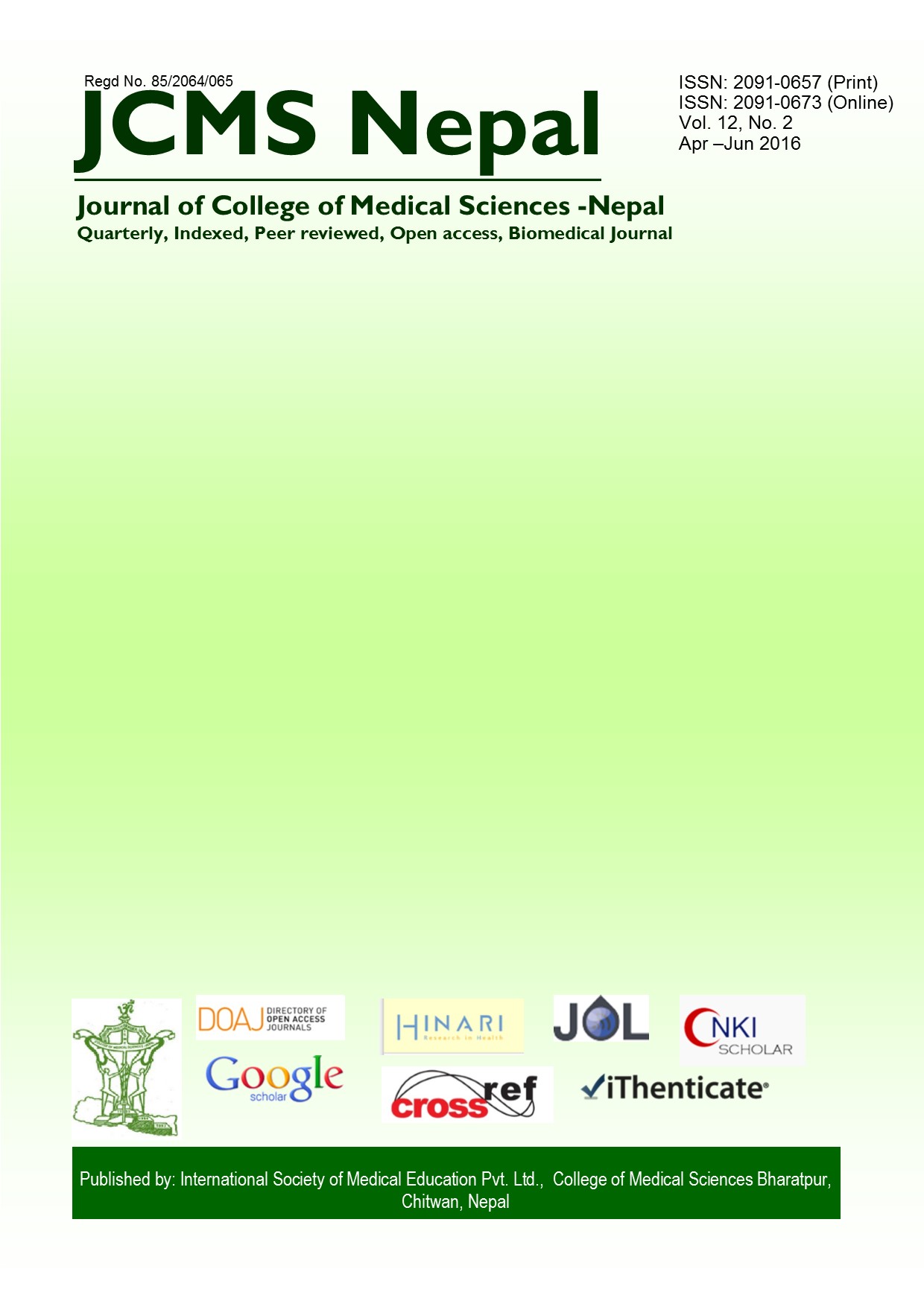Evaluation of prescribing indicators and pattern among dermatological outpatients in a teaching hospital of central Nepal
DOI:
https://doi.org/10.3126/jcmsn.v12i2.15452Keywords:
Dermatological outpatients, polypharmacy, prescribing indicators,Abstract
Background: Evaluation of prescribing indicators by proper analysis of prescriptions under the guidelines of World Health Organization enables us to detect some of the common problems of prescribing.
Methodology: This study was conducted on randomly selected 325 prescriptions of dermatological outpatients of teaching hospital of College of Medical Sciences Bharatpur (Nepal) with an objective to detect the problems of prescribing as well as to delineate the pattern of medicines prescribing.
Results: Total number of medicines prescribed on these prescriptions was 743. The average number of medicines per encounter was 2.28. Antihistamines, antifungals, corticosteroids and antibiotics were four most frequently prescribed therapeutic classes. One systemic as well as one topical medicine belonging to same therapeutic class was prescribed on about one-third of totally analyzed prescriptions. Cetrizine was the most common individually prescribed medicine and fluconazole was the most commonly prescribed antifungal. Medicines prescribed by their generic name were 15.07% and those prescribed from national essential medicines list were 23.42%.
Conclusion: This study reveals polypharmacy, inclination of prescribers for branded medicines and prescribing out of national formulary as problems. Educational and managerial interventions are required to rationalize the prescribing practice.
JCMS Nepal. 2016;12(2):44-9.
Downloads
Downloads
Published
How to Cite
Issue
Section
License
This license enables reusers to copy and distribute the material in any medium or format in unadapted form only, for noncommercial purposes only, and only so long as attribution is given to the creator.




